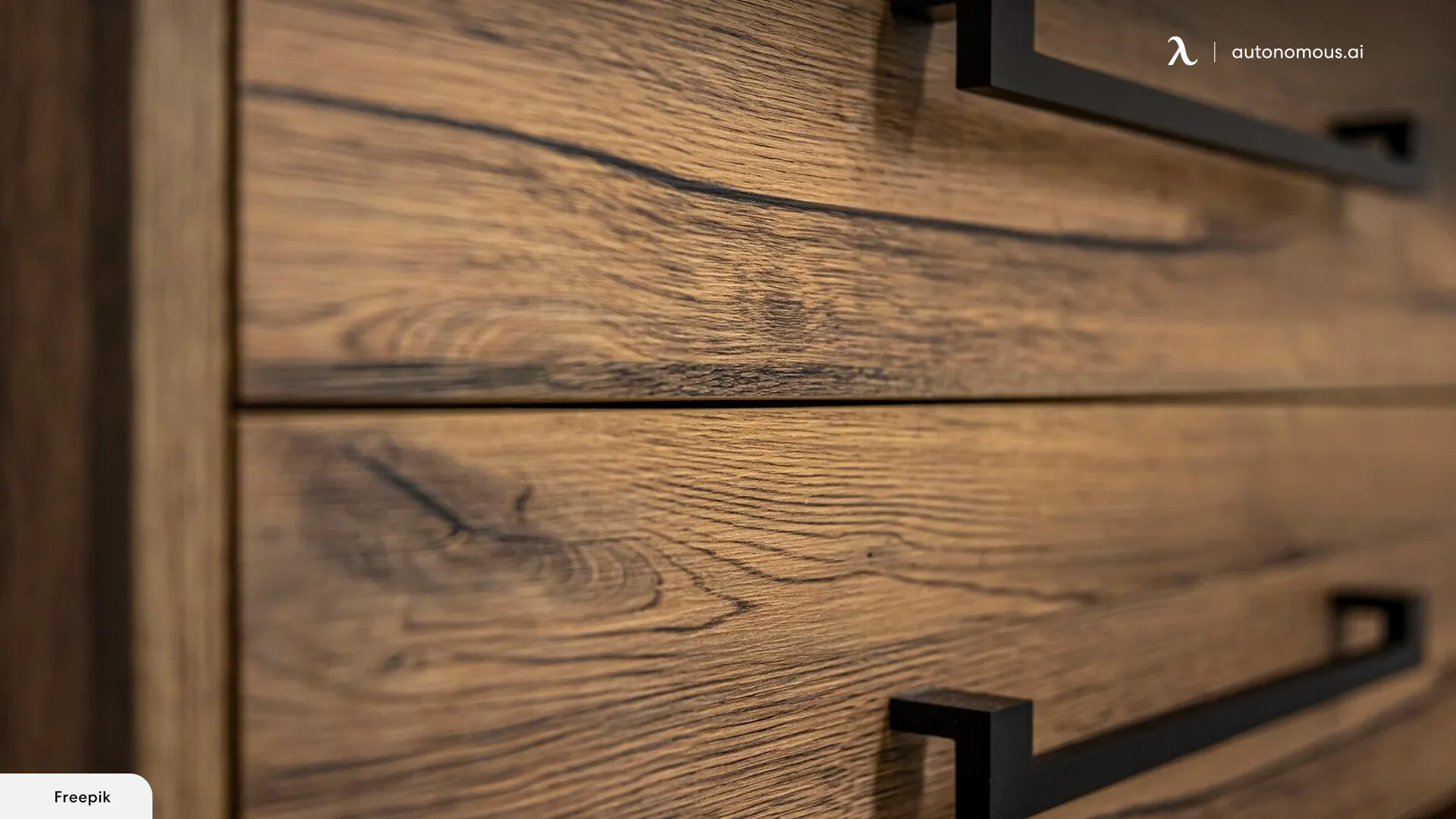
Is Black Mold on Wood Furniture Dangerous? What You Need to Know
Table of Contents
- Is Black Mold on Wood Dangerous?
- Why Does Mold Grow on Furniture?
- Identifying the Different Mold Species
- The Health Effects of Exposure to Black Mold
- What Do I Need to Remove Mold?
- Household Products You Can Use to Treat Black Mold
- Safety Products and Other Items You Might Need
- Cleaning Up the Mold in Five Steps
- The Bottom Line
Wooden furniture can be the perfect addition to your home. Whether you have a repurposed secretary desk or a modern kitchen cabinet, the prospect of dangerous black mold on the wood can be a serious cause for concern.
Although it can cause some serious discoloration on your furniture, the dangers of black mold go beyond that. Because mold is a fungus that typically grows in damp, warm areas, it can result in severe health problems if left unchecked.
If you have noticed dangerous black mold growing on your furniture, then you have come to the right place.
In this article, we will explore the reasons why mold grows on furniture, identify the different mold species, talk about the health effects of exposure, and provide a few tips on how to get rid of it.
Is Black Mold on Wood Dangerous?
Firstly, it’s important to understand that black mold is one of the worst types of molds that you can find.
Mold growth is not uncommon, particularly in areas where there is moisture and poor ventilation. While you should definitely take any kind of mold seriously, you should be especially careful when you notice the prevalence of dangerous black mold on wood.
The truth is that there are a number of different mold species, and some release mycotoxins, which can result in serious health issues.
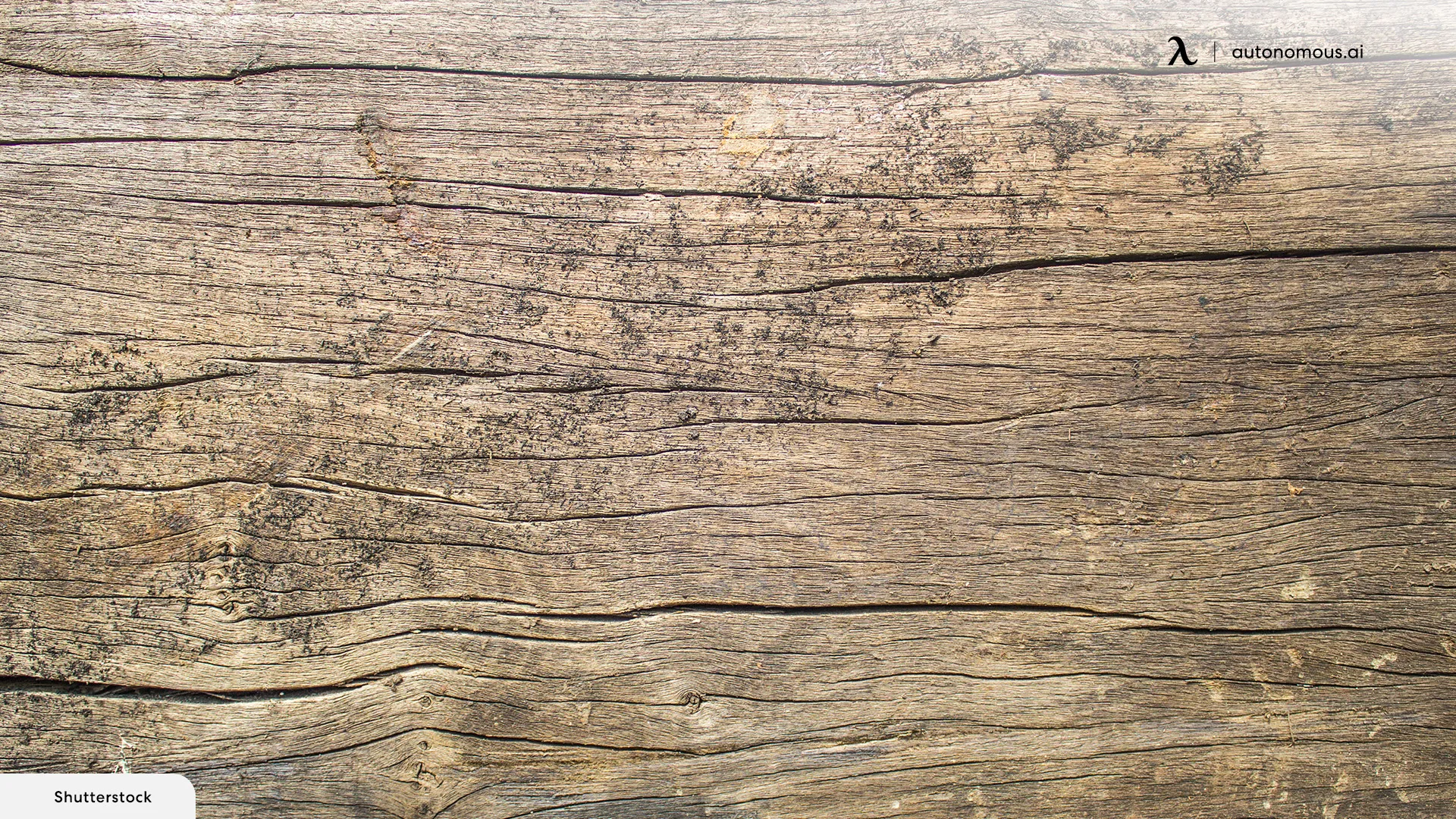
Why Does Mold Grow on Furniture?
Understanding why mold grows on home furniture is important for addressing the underlying issue and preventing this issue from recurring.
Firstly, you need to understand that wooden furniture is particularly prone to mold growth. Why is that, you ask? Well, it’s because mold requires a substrate or something to attach to, and wood is perfect.
It is porous in nature and can absorb water well, which is essential for fungi to grow, creating the perfect breeding ground for a variety of mold species.
In addition, mold requires dark, warm, and unventilated areas to grow. That’s because it cannot survive in the presence of sunlight and requires moist environments to thrive. This is why it isn’t prevalent or widespread in winter months.
During the colder months, mold on wood furniture will become dormant, only to thaw out and continue to thrive in warmer weather.
It’s also necessary to mention here that removing mold is no easy task. Because the surface is so porous, the mold tends to infiltrate it. This means that any treatment method will need to reach the inner recesses of the wood that has been affected.
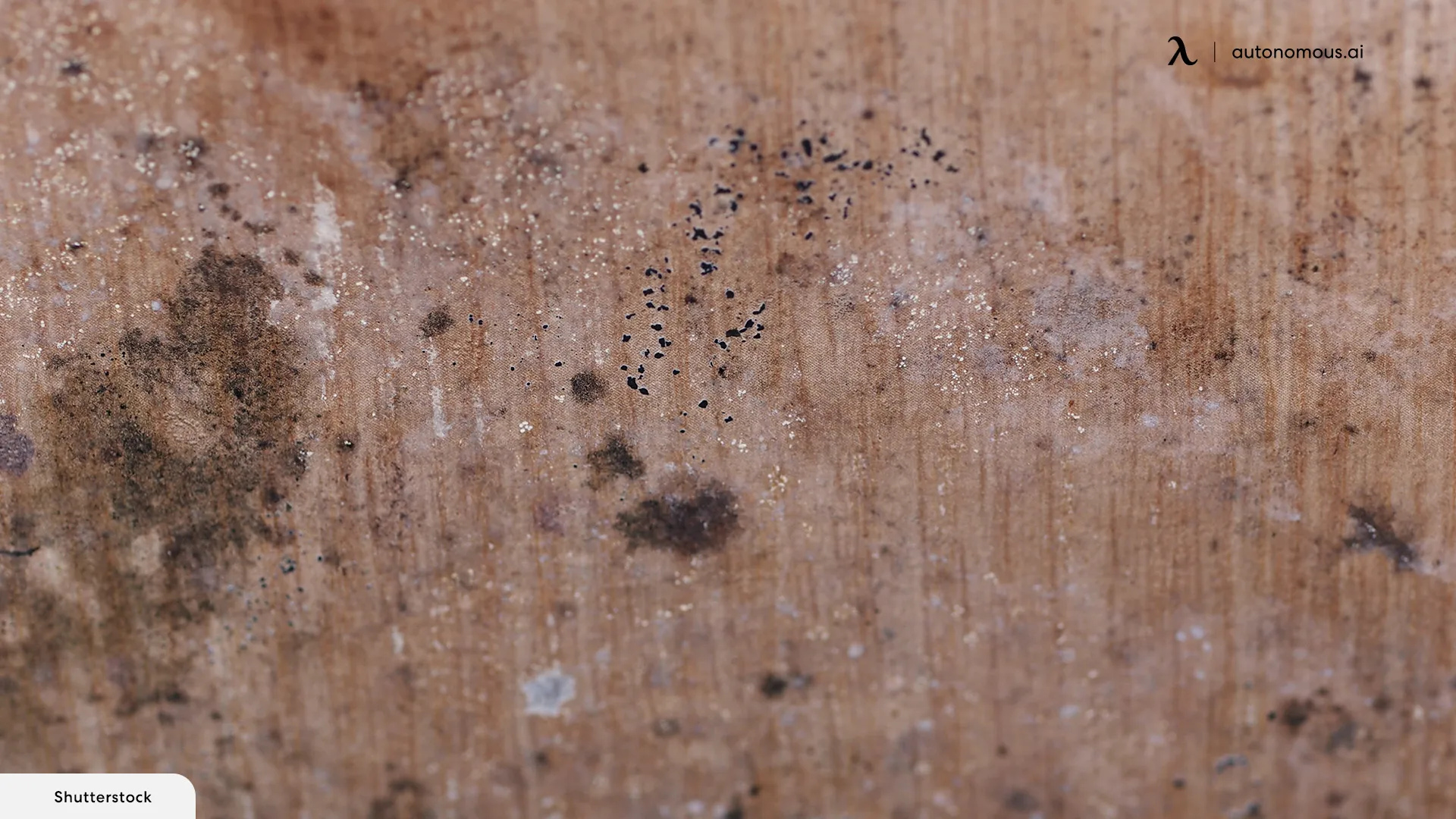
Identifying the Different Mold Species
There are thousands of different mold species, and we’d probably be here all day if we had to cover each one. Fortunately, all molds fall into one of three categories:
- White mold
- Black mold
- Green mold
In the section below, we’ll go into a little more detail on these three types to give you a better understanding of the seriousness of each type.
White Mold
Let's start with the least concerning mold type. White mold typically does not typically cause issues with your health, but you should still wear protective clothing and safeguard your skin when treating affected surfaces.
While not as deadly as black mold, white mold is nevertheless a warning that your home or office may have an issue with high moisture and high humidity levels.
White mold is distinguished by its white color, but you will also notice a powdery or stringy texture.
It's important to remember that although not as dangerous, you do not want to breathe in powdery white mold. All mold species emit spores, which can have mild to serious effects on the respiratory system.
This is why addressing mold promptly is so important.
Black Mold
Black mold is notorious for the effect it has on wood furniture and human health. As the name indicates, this type of mold is black in color.
There are several different species of dangerous black mold, but the most concerning by far is Stachybotrys chartarum. That's because this mold species emits toxic fumes or mycotoxins that can cause respiratory difficulties as well as skin irritation.
It's important to remember that mold is a living organism, and like all living organisms, it must fight to survive. To do so, it releases mycotoxins as a defense mechanism that allows it to grow.
When treating this type of mold, it’s important that you wear the correct protective gear. Compared to the other two types of molds, black mold is harder to address because it typically requires more moisture to grow.
This is why black mold is common on furniture that has been exposed to flooded areas or parts of the home that have experienced water leaks. If you see this type of mold, you will need to identify the underlying cause and address that to prevent the mold from coming back.
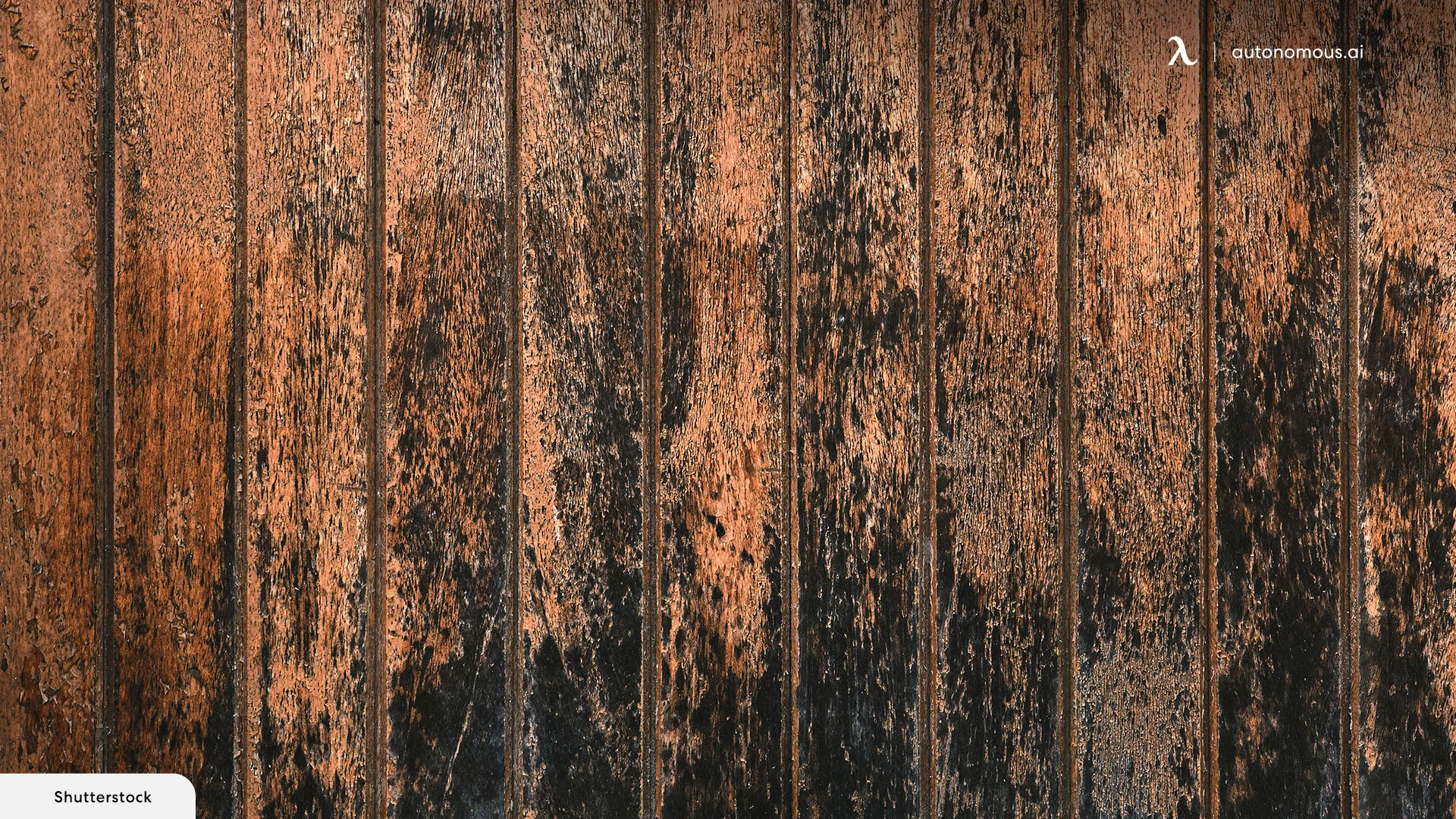
Green Mold
Green mold might seem uncommon on wood furniture, but you'd be surprised how prevalent it really is.
Although not as dangerous as black mold, green mold is still a cause for concern. It is a more serious issue than white mold.
As opposed to white mold, this type of mold is more likely to result in health problems (albeit not as bad as those caused by black mold species).
Green mold, like white mold, is a symptom of moisture accumulation on a surface, and it's most usually caused by inadequate ventilation and high humidity levels rather than water intrusion.
The Health Effects of Exposure to Black Mold
Damp and moldy conditions, in general, can create a variety of medical issues, particularly in those who are susceptible to the allergens produced by molds.
The truth is that dangerous black mold on wood may negatively impact the immune system and induce more serious disorders such as asthma episodes, causing a runny nose, sneezing, puffy red eyes, and irritation of the skin.
Long-term exposure to mold increases the likelihood of severe and potentially fatal asthma attacks. Stachybotrys chartarum, the most dangerous black mold species, produces sick building syndrome, a condition in which mycotoxins emitted by the fungus make humans feel ill.
Young children and babies are more vulnerable to the health effects brought on by dangerous black mold on wood due to their narrow airways.
Furthermore, individuals with respiratory diseases, such as allergic conditions and asthma, as well as those with skin disorders, such as atopic eczema, and those with compromised immune systems, are more susceptible to the harmful effects of mold exposure.
Those with weakened immune systems are more susceptible to fungal infections caused by spores breathed into the lungs.
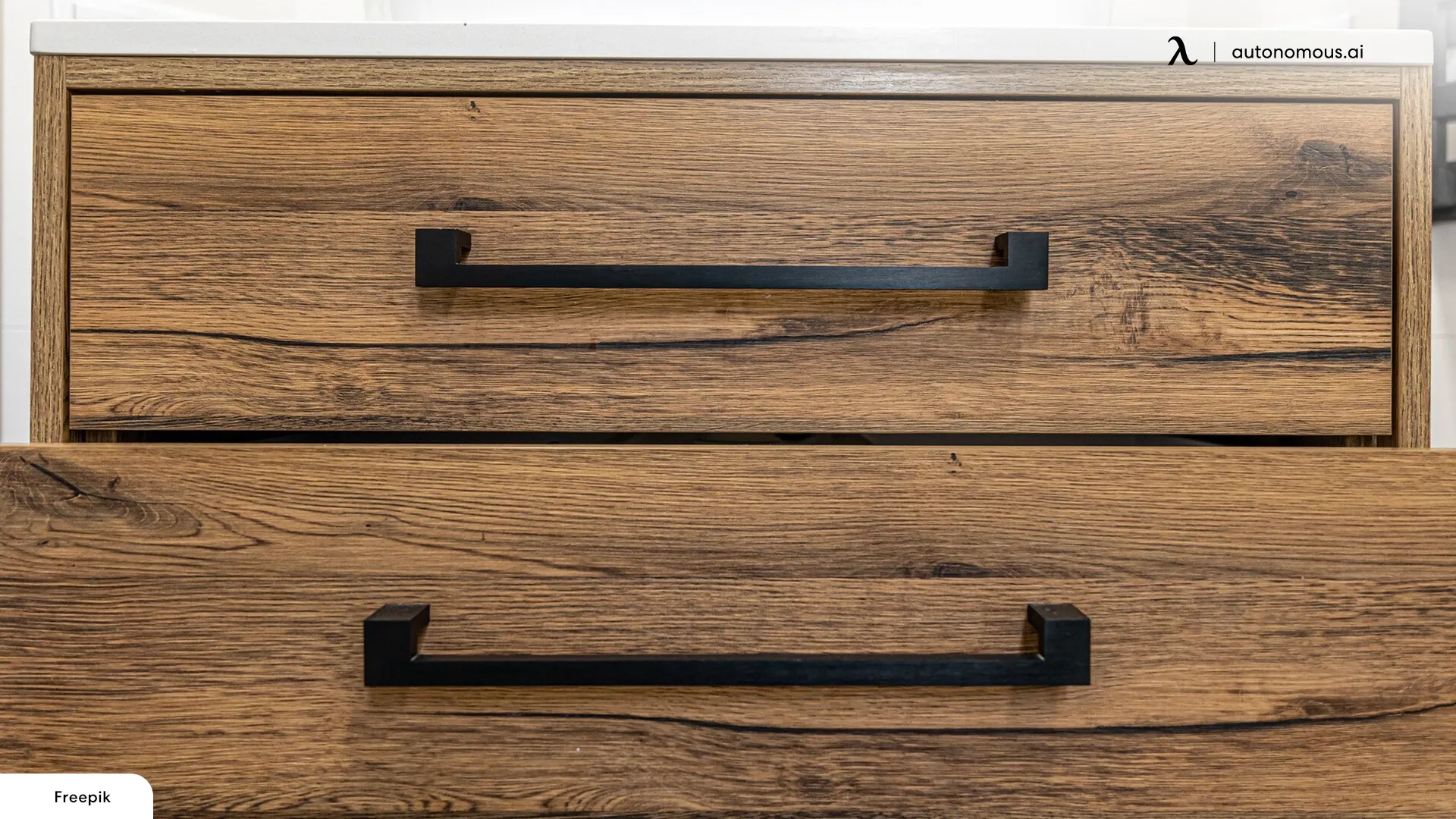
What Do I Need to Remove Mold?
The reality is that mold can infiltrate porous surfaces on wooden furniture, which makes it incredibly hard to get rid of. To make matters worse, wooden surfaces can absorb water, making it even harder to restore.
However, there are steps you can take to eradicate dangerous black mold from your home. You will need to start by gathering the correct supplies to ensure your safety and that the dangerous black mold on wood is dealt with effectively.
Household Products You Can Use to Treat Black Mold
There are a number of products you can use to get rid of black mold. We have provided a list below. Keep in mind that you won’t need all of them, and most can be found in your pantry.
1. Hydrogen Peroxide
Hydrogen peroxide is a great option for killing mold. It does this by breaking down some of its essential components and doesn’t contain toxic chemicals that can cause you harm. If you cannot find hydrogen peroxide, then look for a mold removal product that contains it.
2. Distilled White Vinegar
White vinegar is another fantastic option for treating black mold without the use of dangerous chemicals. The best part is that it can penetrate the surface of the wood to target and kill black mold that is deep set.
3. Vodka
Alcohol is toxic to mold, so if you have some vodka lying around, you can use it to kill the mold on your wooden sit-stand desk. It is a great solution to try if the mold is localized and not widespread.
4. Dishwashing Liquid
If you don’t have any of the above at home and still want to get rid of black mold on your furniture without using harsh chemicals, then try a little dishwashing liquid.
Soap can help to detach mold from a surface. It works best on stained or painted wooden surfaces but won’t work well in places where the mold has penetrated the wood.
5. Mold Removal Products
You can also go for a mold removal product that is designed to keep mold. These products often work quickly and can produce great results.
However, keep in mind that these chemicals are often toxic and require the use of safety gear. Be sure to read the instructions to ensure that you don’t end up with chemical burns.
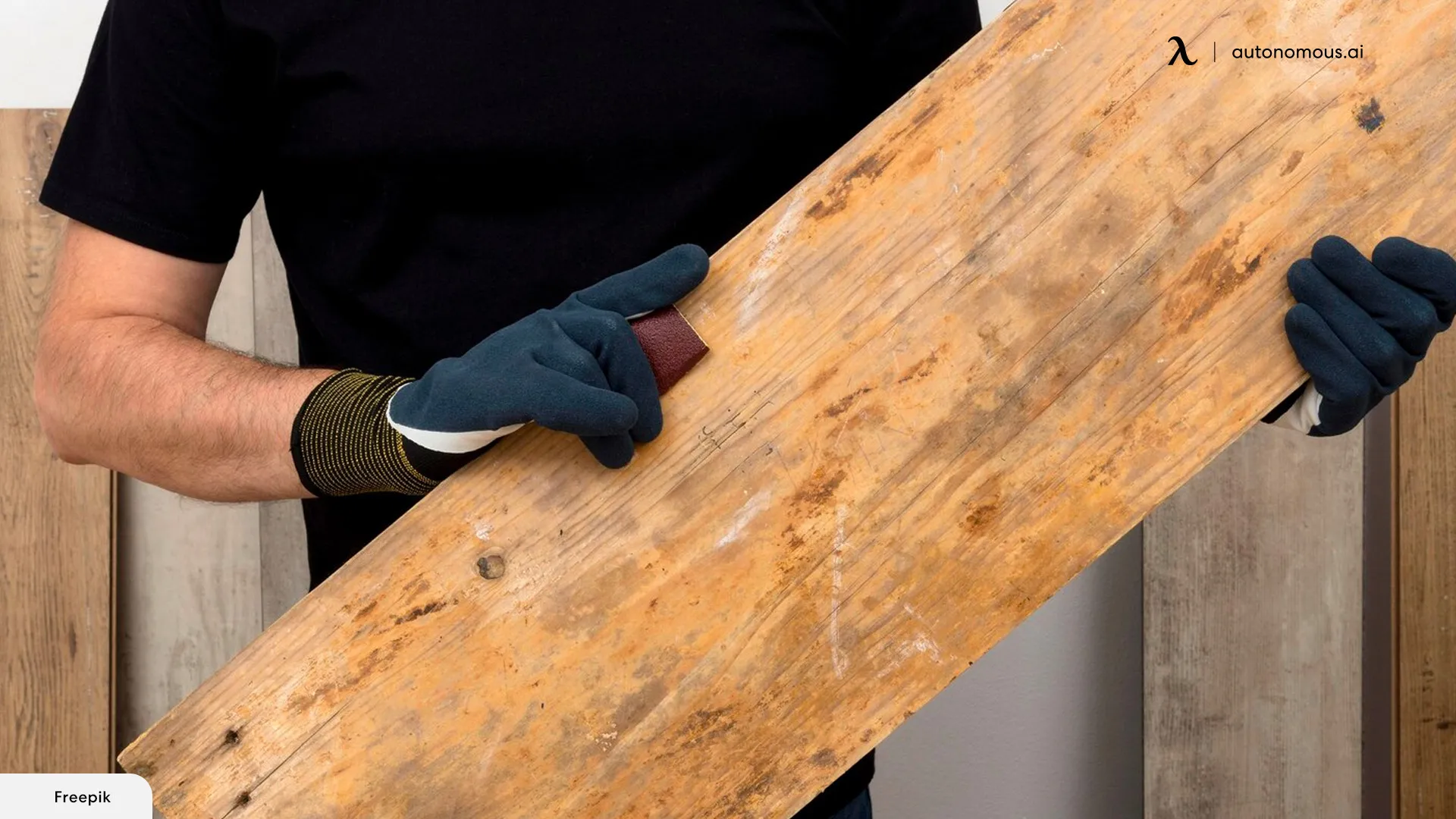
Safety Products and Other Items You Might Need
In addition to the mold-killing agent of your choice, you will also require personal protective equipment and a few materials to help you treat the problem without being exposed to the dangers of black mold.
- Rubber gloves
- Safety goggles
- Coveralls
- A face mask that covers your nose and mouth
- Scrub pad or soft bristle brush
- Damp cloth
- Plastic bag to get rid of soiled cloth and scrubbing tools
- An electric sanding machine or sandpaper
- Hot water
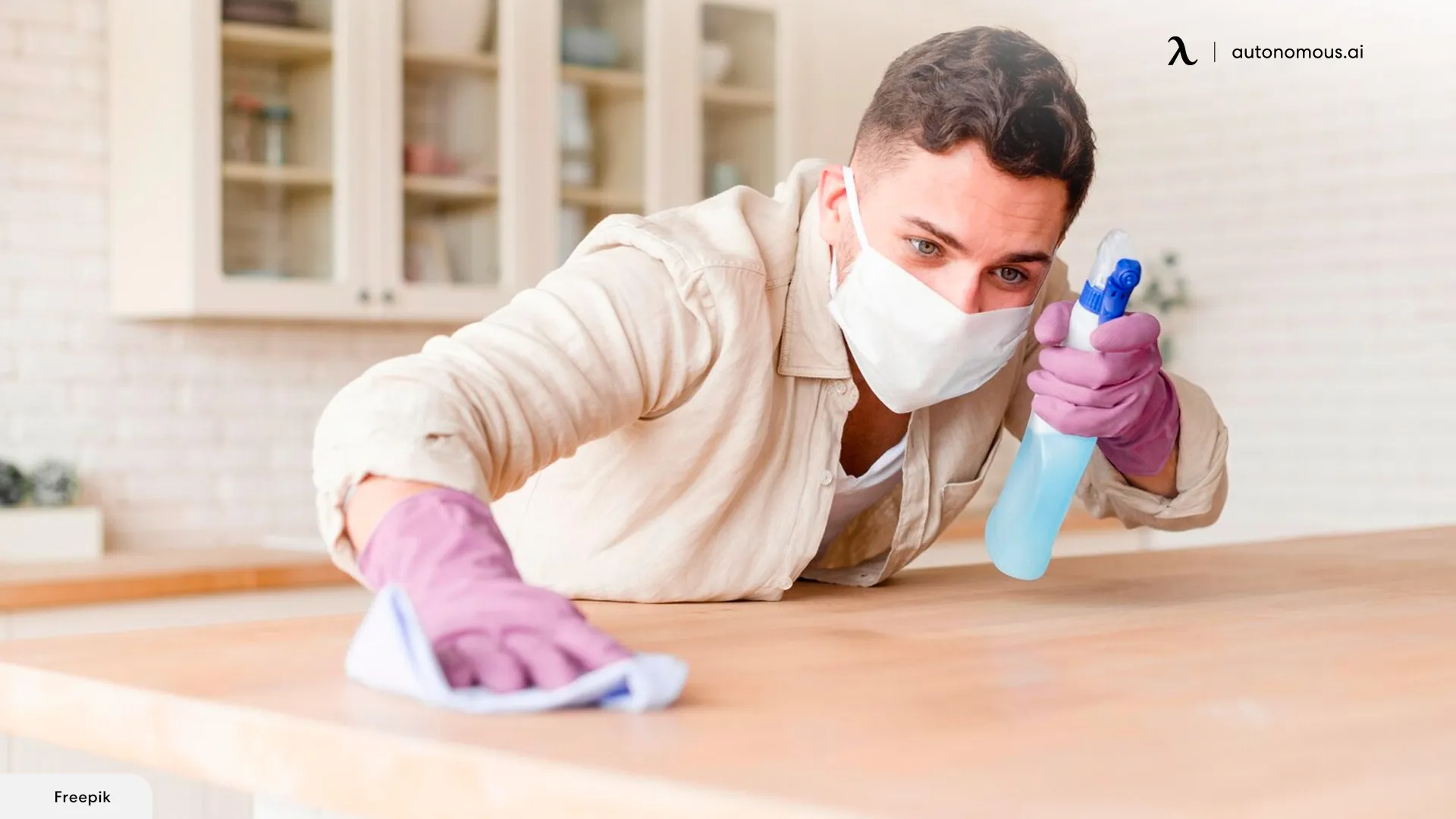
Cleaning Up the Mold in Five Steps
Here are the steps you will need to follow to effectively remove black mold from a wooden home standing desk, chair, or cabinet:
Step One: Choose the Right Method
Before you try to kill the mold on your furniture, be sure to assess the nature and severity of the issue. If the mold is widespread, then a simple spritz of vodka won’t do the trick. To address widespread issues, you can use a commercial-grade mold product.
Step Two: Gear Up
Before touching any mold-killing product, be sure to put on the appropriate personal protective gear, as listed above.
Step Three: Treat the Wood
To kill black mold on wood, spray the chosen product on the affected surface liberally and allow it to sit for about 30 seconds before using your brush or pad to scrub the mold off. To prevent any damage to your DIY computer desk or other item of furniture, be sure to do this gently and in circular motions, only applying pressure if the need arises.
When the color has changed and you no longer see the mold on the surface, use a moist cloth to wipe the area down and allow it enough time to dry.
If you are using a mold removal product, be sure to follow the instructions on the bottle.
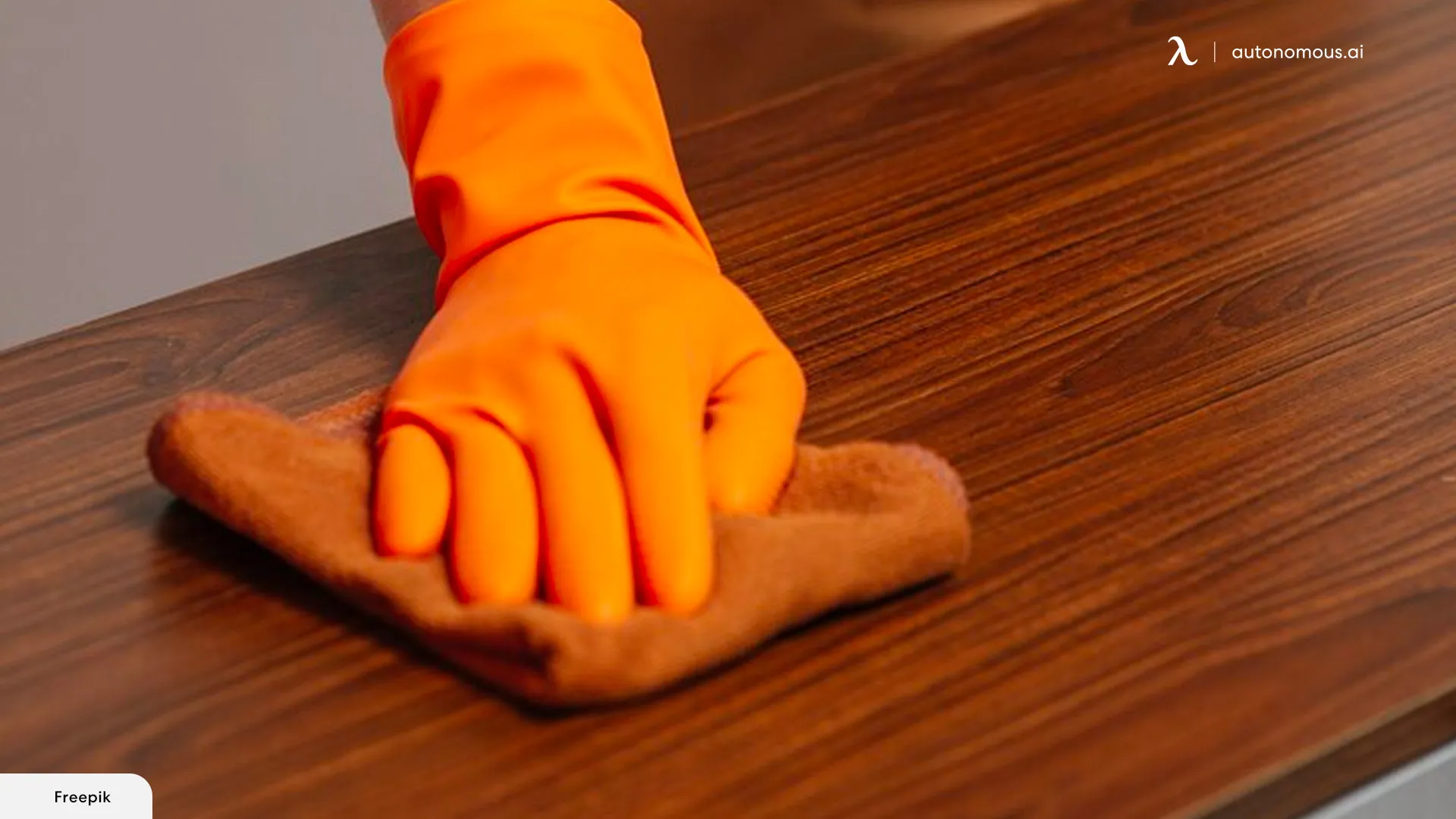
Step Four: Sanding
Mold can penetrate the surface of wood, so it’s important to ensure that you have removed all of the mold, especially the parts that may be deep within the surface of your furniture. Sanding the wood for your desk with an electric sander or sandpaper is a great way to do this.
You’ll want to do this slowly without damaging the surface and brush away any debris before repeating step 3 above to kill any remaining mold.
Step Five: Get Rid of Cleaning Supplies
That’s right – throw them away! Black mold is dangerous, and you don’t want to risk exposing your family to it, so take anything that has come into contact with the mold and throw it out. Use your plastic bag to do this, preventing anyone else from being exposed, even after you throw it out.
After you have successfully removed black mold from your furniture or wooden desk décor elements, be sure to address the underlying issue to prevent the mold from coming back.
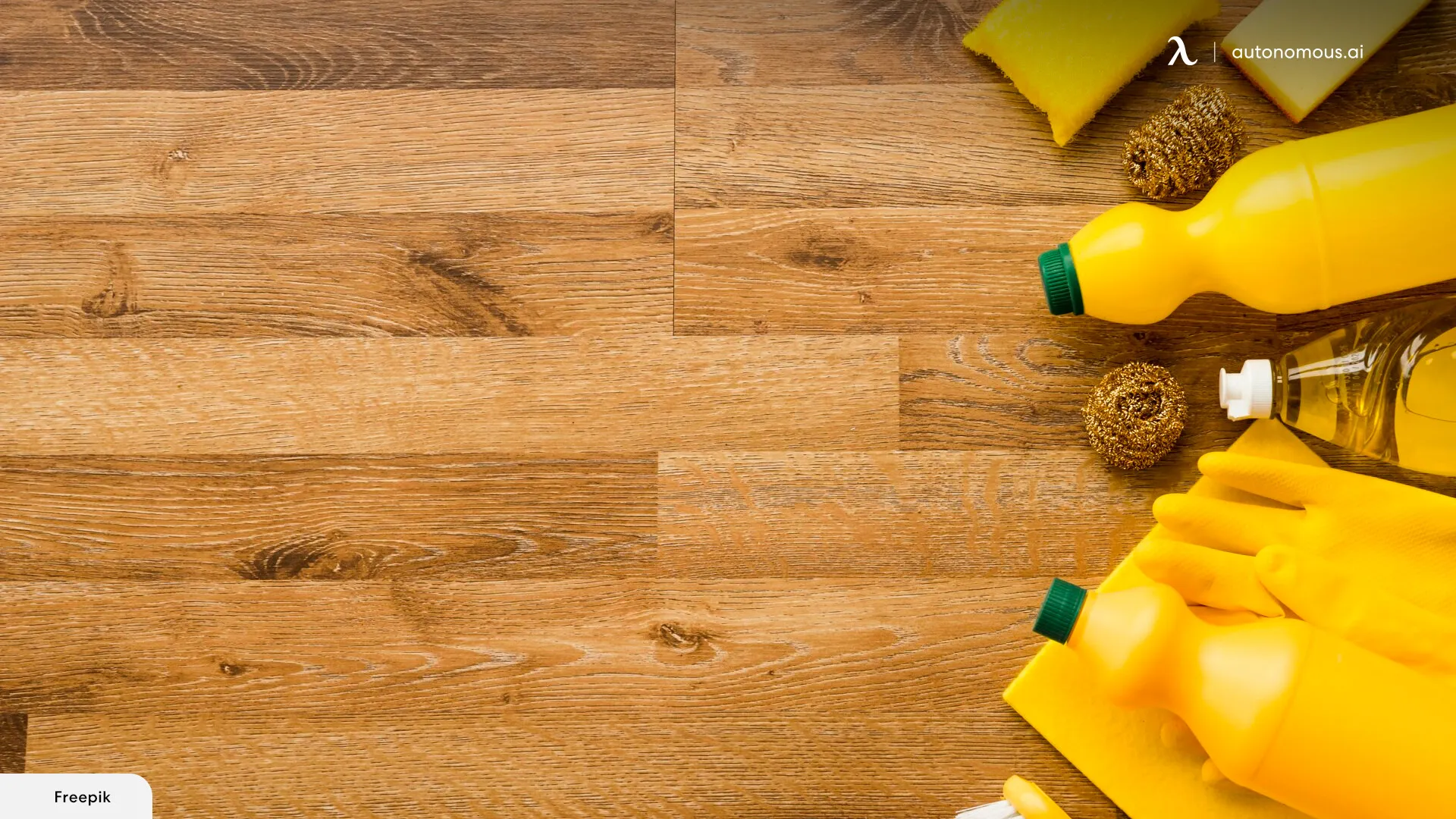
The Bottom Line
Well, there you have it! In this article, we answered the question, “Is black mold on wood dangerous?” We also discussed the dangers of black mold and provided a comprehensive guide on how to effectively remove it.
If you found this helpful and would like to read more, why not check out this article to get some ideas on sophisticated desk decorations for work?
Get exclusive rewards
for your first Autonomous blog subscription.
Spread the word
You May Also Like




-7512dd9e-3510-42ed-92df-b8d735ea14ce.svg)


